Do you have a question about the Weber Spirit SP-335 and is the answer not in the manual?
Explains DANGER, WARNING, and CAUTION safety statement meanings for hazard identification.
Steps to take if you detect gas odor from the barbecue, prioritizing immediate safety.
General warnings regarding flammable liquids, LPG cylinder storage, and operating environment.
Indicates the internal barbecue temperature for heat adjustment during cooking.
Keeps food warm or toasts buns while the main meal is grilled below.
Durable and long-lasting premium stainless steel cooking grates for consistent performance.
Creates an intense heat zone for quickly adding sear marks to meat.
Provide workspace for platters and tools, with hooks for easy access and organization.
Allows simmering sauces or boiling potatoes while the main course grills.
Offers enclosed storage space for essential grilling tools and accessories.
Explains direct and indirect heat methods for different foods and cooking techniques.
Covers essential do's and don'ts for successful barbecuing, including preheating and monitoring.
Highlights key tools like mitts, spatulas, and timers for safe and effective grilling.
Essential details on LPG, safe handling, cylinder requirements, and regulator functions.
Specifications for regulators, hoses, and country-specific standards for safe operation.
Notes special requirements for LPG cylinders and hoses applicable to customers in Japan.
Technical data on burner orifices and gas consumption rates for different regions.
Step-by-step guide for safely placing and installing the LPG cylinder outside the cabinet.
Instructions for connecting the regulator to the cylinder and performing initial leak checks.
Detailed procedure for testing gas connections for leaks using a soap and water solution.
Steps for safely disconnecting the regulator from the LPG cylinder after use.
First-time burn-off procedure and routine checks between cooking sessions for upkeep.
Importance of preheating for optimal cooking and cleaning cooking grates for performance.
Step-by-step instructions for lighting the main burners using the ignition system and turning them off.
Technique for searing meat at high temperatures to develop flavor and caramelization.
Instructions for lighting the side burner using electronic ignition and turning it off.
Cleaning the lid, grates, FLAVORIZER BARS, and burners for optimal performance.
Removing debris from the cookbox and cleaning the grease tray and catch pan.
Cleaning stainless steel, painted, and plastic exterior surfaces based on material type.
Cleaning the side burner tube and valve for proper function and to prevent blockages.
Diagnosing why burners won't ignite and resolving gas flow problems like low heat.
Using a match to manually test gas flow to burners when ignition fails.
Resolving issues like yellow flames, gas smells, or hissing sounds indicating potential leaks.
Solutions for grease buildup, flare-ups, and troubleshooting ignition system components.
| Main Burners | 3 |
|---|---|
| Sear Station Burner | Yes |
| Side Burner | Yes |
| Grates | Porcelain-enameled cast iron |
| Flavorizer Bars | Stainless steel |
| Ignition Type | Electronic crossover |
| Fuel Type | Liquid propane |
| Primary Cooking Area | 424 square inches |
| Warming Rack Area | 105 square inches |
| Total Cooking Area | 669 square inches |
| BTU-per-hour Input | 32, 000 |
| Dimensions - Lid Closed | 24" D |
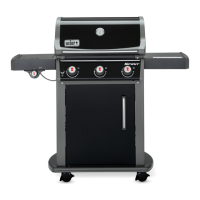
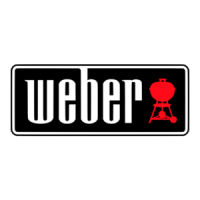
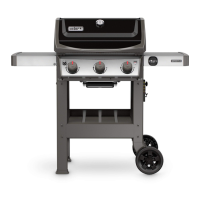
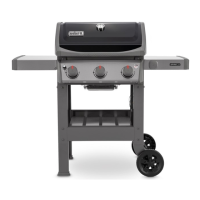
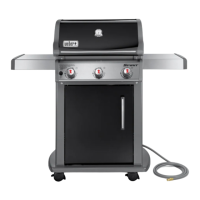


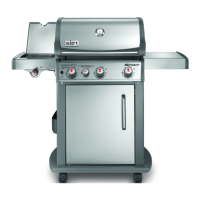


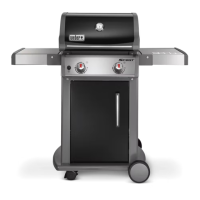
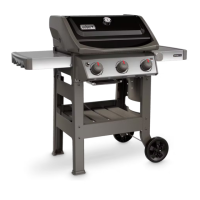
